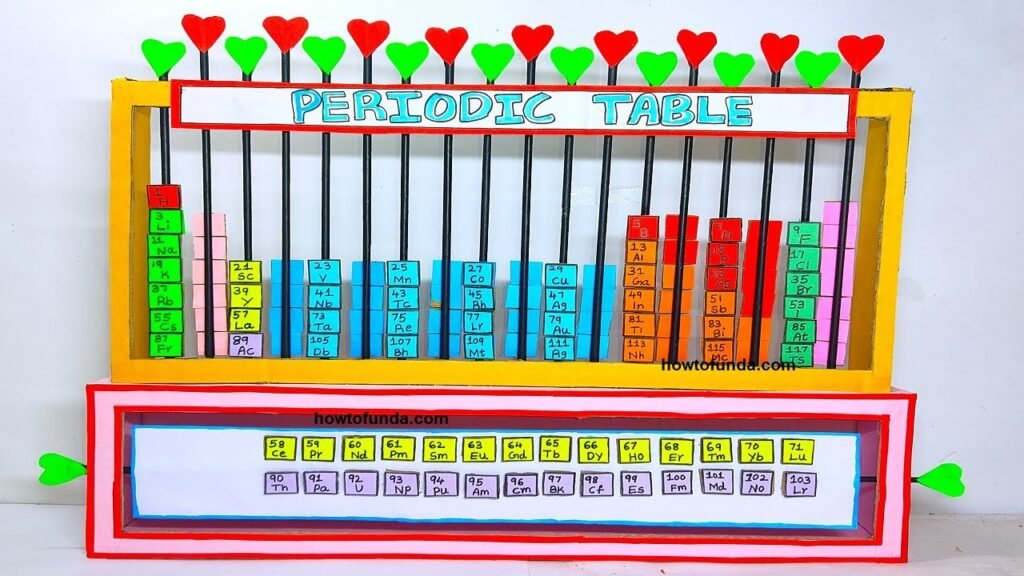In this project, we’ll create a 3D working model of the periodic table using cardboard and colored paper.

Each column (group) will be rotatable to demonstrate the periodicity of elements. Here are the steps:
Materials Needed:
- Cardboard sheets
- Colored paper or construction paper
- Scissors
- Glue or adhesive tape
- Markers or pens
- Small rotating platform (e.g., Lazy Susan base, optional but recommended)
Building the Periodic Table Model:
1. Base Structure:
Step 1: Cut out a large rectangular piece of cardboard to serve as the base of your model. This will provide stability for your components.
2. Creating Columns for Groups:
Step 2: Plan the layout for your periodic table. Determine how many columns (groups) you want and how many elements will be in each.
Step 3: Cut out vertical strips of cardboard to represent the columns/groups. These strips will be arranged side by side to create the table’s structure.
3. Designing the Elements:
Step 4: Cut out smaller rectangles of colored paper to represent individual elements. Write the element’s symbol, atomic number, and atomic mass on each rectangle.
Step 5: Attach these element representations to the columns using glue or adhesive tape. Arrange them in order of increasing atomic number within each column.
4. Adding Rotatable Mechanism:
Step 6: Attach the rotating platform to the bottom of the base. Ensure it allows for smooth manual rotation.
Step 7: Attach a vertical rod or dowel to the center of each column. This will serve as the axis for rotation.
Step 8: Connect all the rods to the rotating platform. You can do this by inserting them into a common point on the platform or by creating a circular holder for the rods.
5. Labeling and Detailing:
Step 9: Label each column with the group number and name. Use markers or colored paper for clear identification.
Step 10: Use markers or pens to add any additional details or labels to your model.
6. Final Touches:
Step 11: Make sure all elements are securely attached, and the model is balanced. Ensure that it rotates smoothly.
Your 3D rotatable periodic table working model is now complete!
This interactive model provides a visual representation of the periodic table’s structure and demonstrates the periodicity of elements within each group.
It’s an engaging educational tool for learning about the organization of elements in the periodic table.

